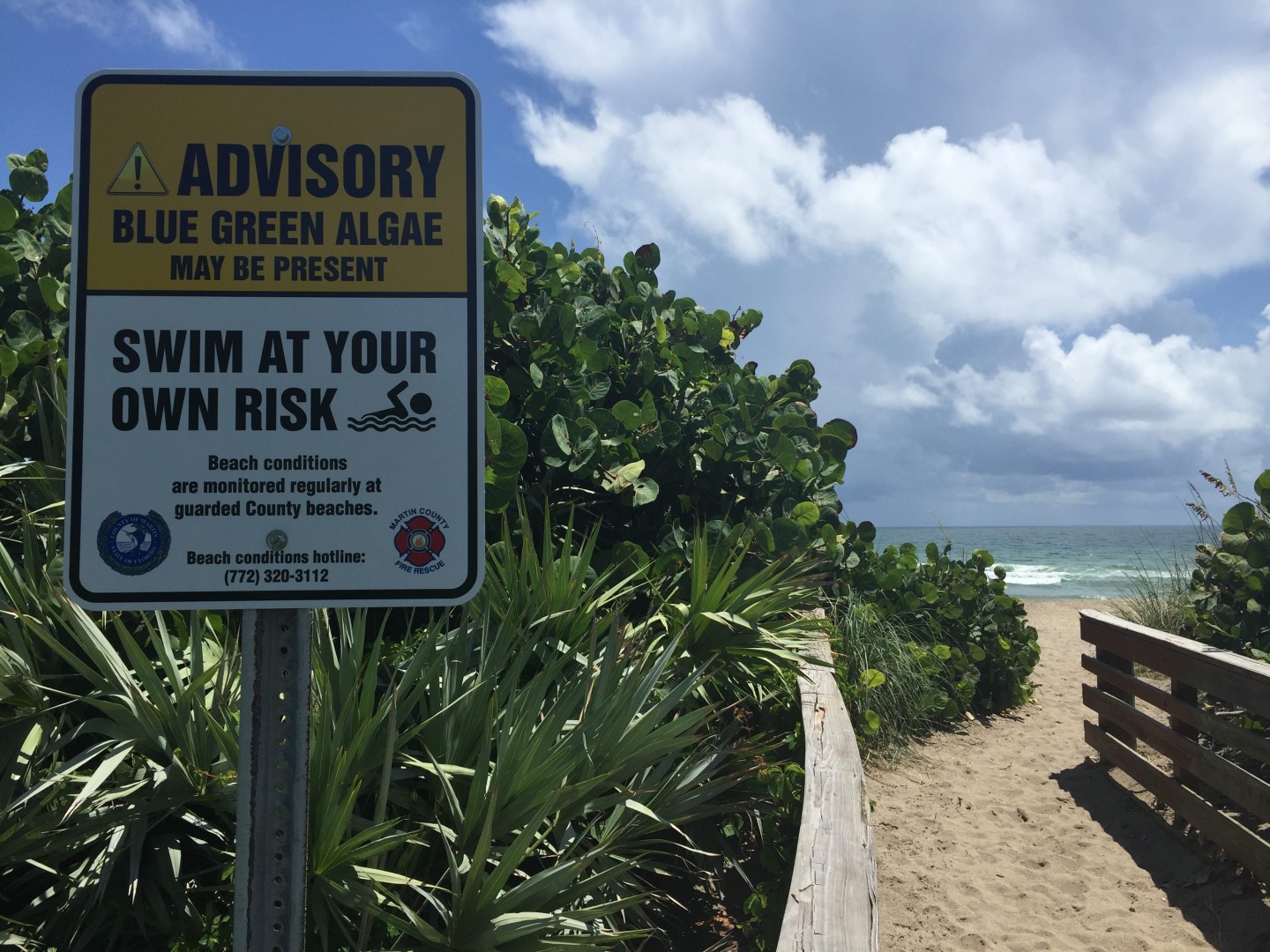
09.12.16
The Growing Problem of Toxic Blue Green Algae Blooms (Cyanobacteria)
By Surfrider FoundationCyanobacteria, also known as blue-green algae, are blooming in waters around the world. Earlier this summer, a massive blue-green algae bloom that originated in Florida’s Lake Okeechobee covered nearby major river and canal systems, and eventually caused the Governor to declare a State of Emergency along Florida’s Atlantic coast. Due to the rerouting of water for flood control, development near Lake Okeechobee, and the State’s failure to protect water quality from agriculture and residential sources of pollution, Florida’s waters are in danger. The composition of the Everglades ecosystem and the surrounding watersheds are changing, and not for the better.
Pollution from wastewater, fertilizers, and other agricultural runoff increased the nutrients present in Florida’s waterways, and fueled the growth of toxic blue-green algae blooms. Not only is this algae “guacamole thick,” its toxicity has suffocated over 30,000 acres of seagrass, threatened human health, and has killed countless seabirds, manatees, and dolphins. Due to this widespread blue-green algae bloom, not only has Florida experienced diminished water quality, but it has also lost habitat for many endemic and endangered species. Read more about the history of this water mismanagement problem and the solutions needed.

Surfrider’s Eastern Long Island Chapter is also dealing with the growing problems of toxic blue-green algae blooms. During my two summers working for the Chapter’s Blue Water Task Force, the primary water quality concern is the spread of cyanobacteria and the associated health risk in coastal recreational waters. Due to their toxicity, widespread cyanobacterial blooms have caused the New York DEC to close many local waterbodies to recreation and fishing. Skin contact with cyanotoxins can cause irritation of the skin (rash or skin blisters), eyes, nose and throat, and inflammation of the respiratory tract. Swallowing water containing high concentrations can lead to nausea, vomiting, abdominal pain and diarrhea. Effects on the liver and nervous system of animals and people have also been documented in severe cases.
Blue-green algae has become an important conversation for environmentalists, the local government, businesses, and landowners in Eastern Long Island. Given the momentum gained in recent years, I am optimistic that this will be the watershed issue that finally builds political will to change the way we manage our waste and take action to protect clean water. The most critical threat to water quality on Long Island is the presence of excess nitrogen from failing and inadequate septic systems. This, along with chemical fertilizers applied to lawns, cause blue-green algae and other harmful species to bloom. The combination of high nutrient levels, high water temperatures, and still conditions make many of our water-bodies in Eastern Long Island vulnerable to cyanobacteria blooms. The Eastern Long Island Chapter has recently teamed up with local filmmaker Mikey DeTemple to create a short film, Into the Sea, that illustrates our impact on local watersheds and the responsibility we all share to help protect clean water.

This problem spans much wider than the Atlantic coast of Florida or Eastern Long Island’s bays and beaches. Scientists are linking the increased frequency of harmful algal blooms to climate change and human activity. Worldwide, these blooms are increasing in magnitude, frequency, and in geographical spread. With warmer temperatures associated with climate change, cyanobacteria blooms into more northern latitudes. With a higher intensity of rainfall, stormwater carries nitrogen and phosphorus from urban and agricultural sites into local waterways. Because cyanobacteria also grow well in still water, blooms are becoming more frequent in rivers that have been dammed to create reservoirs. With a rapidly changing climate, warmer weather, more intense rainfall, and irrespective human activity, we are perpetuating optimal conditions for harmful algal blooms.
When speaking with Dr. John Farnsworth, my academic advisor from Santa Clara University, I was explaining to him our current water quality concerns on Eastern Long Island regarding cyanobacteria. With a chuckle, he replied, “Here’s my motto for climate change: ‘Cyanobacteria—get over it.’” But Surfrider won’t settle for that.
Both the Palm Beach County and the Eastern Long Island Surfrider Chapters are working to increase awareness of water quality impairments so community members know which waters are safe for recreational use. We strive to provide information to the community about the cause of harmful algal blooms, the effects, and what can be done to prevent them from happening in the future.
In coastal communities, our water is our life. Everything we love to do involves the water - we surf, paddle board, kayak, fish, and just enjoy the view. Our economy depends on healthy waterways so that we can continue to do the things we love. Clean water supports our quality of life. It’s time that we take accountability for our actions, and work together to protect our local waterways on which we depend.
Learn more about Blue Green Algae/Cyanobacteria on Beachapedia, or check out the following fact sheets:
